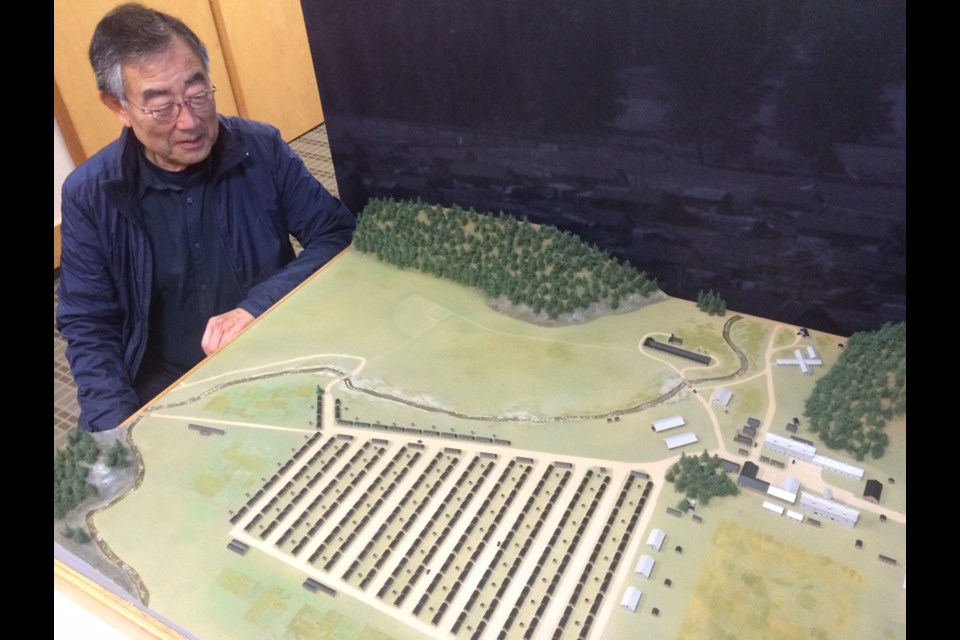Howard Shimokura was just four years old when his family arrived at Tashme, one of the largest and most isolated Japanese internment camps, just outside of Hope. More than 2,600 Japanese-Canadian were sent there during the Second World War.
“Pretty well all the memories I have are positive. As kids, we didn’t really know what was going on. I had friends, and we played all the time outside, (we’d) go to school. So life was very fun for us as kids. We’d hear stories from our parents, but we never really understood what was going on,” Shimokura says at a table in the lobby of Burnaby’s Nikkei Centre.
As a child, Shimokura didn’t understand the politics, the racism, the adults’ anger and the years of white resentment towards the Japanese.
“I never really pressed my parents to understand. I was a kid, I wasn’t interested all that much in why this attitude was there,” he says. “And the community made the best of it. I’ve often thought people should know more about what went on.”
Thousands of Japanese-Canadians were rounded up in the Second World War and banished from the B.C. Coast. Their finishing boats were confiscated, their homes taken away, and they were forced to sleep in livestock barns on the PNE grounds before they were sent to the Interior. The tales of terrible experiences and limited freedoms are all true, Shimokura says.
“But there’s more to the story than all of that. It really is interesting to me to find out all the details about everyday life, which nobody has recorded as far as we can tell,” Shimokura says.
It’s the element of everyday of life that Shimokura has helped capture with the Tashme Historical Project in collaboration with Burnaby’s Nikkei National Museum and Cultural Centre. The project, two years in the making, culminated with www.tashme.ca, a website built on archives and stories from children who lived there.
Shimokura, now 77, stayed at Tashme from age four to about eight.
Shimokura discovered many details much later, while working on the Tashme project. Education, for instance, was something administered in part by the interned Japanese. The provincial government refused to fund schools inside the camps, and the feds threw in some money for elementary classes only, and many of the teachers were recent grads recruited from the interned population. High schoolers were out of luck until churches stepped in with funding so teens could get an education.
Tashme housed more than 2,600 people in rows of shacks – two families per shack - with no electricity or indoor plumbing. Everyone was given work, but the money they earned had to be traded for coupons to buy things in the camp. Sugar and tea were rationed, but there was a bakery, a meat shop, a barber and hair salon.
Shimokura’s strongest memories are of playing outdoors.
“I remember going fishing. There was a creek that ran through the place. I remember going to baseball games, which were held on a ball field in the area, just hanging out outside. There was a small creek up the mountain side behind our house, I remember going up there and playing around, mostly by myself or with a couple of friends,” he said.
“It wasn’t a concentration camp, there were no barbed wires. There were no armed guards or anything like that.”
No one tried to escape, as far as Shimokura recalls, and if they did there would be hell to pay. Anyone who didn’t go along with internment was thrown into an Ontario prison camp.
Linda Kawamoto Reid, a research archivist at the Nikkei National Museum and Cultural Centre, thinks the Tashme website could be the first of its kind, and she hopes it will be a template for more camps.
“Worldwide, there’s nothing that I’m aware of that is like this website in terms of what it was really like in an internment camp, and the best thing about it its it was put together by children who were in the camps. They were actually there,” she told the NOW. “They had their memories, but they also had questions as they grew up. I think it’s very poignant that the volunteers on this committee that created this website and did all this phenomenal research really captured the largest internment camp during the interment period, the largest and the most isolated, and really brought it to life.”
For Shimokura, it’s important to learn from the past.
“If we don’t remember, it will happen again, and it is happening again with a different group of people. These stories have to be told over and over again, especially to our young people,” he said.
To view the site, go to www.tashme.ca.
Facts on Tashme:
The federal government ordered Japanese-Canadians to leave B.C.’s West Coast in 1942, not long after the Pearl Harbour bombing. Anti-Japanese resentment had already been simmering for years, especially in B.C., due in part to Japanese success in fishing, farming and forestry.
More than 20,000 Japanese were displaced during internment.
The name Tashme was created by using the first letters in the last names of the three men in charge of the B.C. Security Commission, the government arm leading the internment charge.
Interment restrictions were lifted in 1949, and Japanese-Canadians could then vote, but their property had already been confiscated and sold off.
Tashme had about 2,600 residents. It was the largest camp in Canada.



